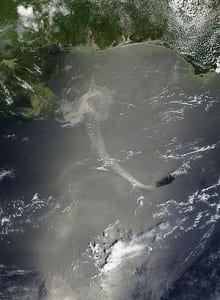The Latest Streaming News: Citizen science updated minute-by-minute
Bookmark this page and come back often
Latest NEWS
Latest VIDEO
The Latest from the BLOGOSPHERE
Citizen science can red-flag potential hazards quickly and offer very specific local information that often fails to make it into official scientific reports
In the summer of 1854 a doctor named John Snow tracked London’s deadly outbreak of cholera to contaminated water coming from a public well—the now famous Broad Street pump. But Snow’s observations had to wend their way through the annals of science and took years to make an impact on the public health. Now, more than a century later, ordinary people can go online and report observations about public health problems and disasters in real time.
In a just-published study a researcher at the George Washington University School of Public Health and Health Services (SPHHS) reports on this new form of “citizen science,” concluding that it can help modern-day public health officials assess health and environmental threats, such as those posed by the 2010 Gulf oil disaster. The researcher studied reports to an online Oil Spill Map and discovered that citizen science can red-flag potential hazards quickly and offers very specific local information that often fails to make it into official scientific reports.
“Thousands of people logged onto the Spill Map in the days and months following the Gulf oil spill and reported smoke, tainted seafood, foul odors linked to the oil dispersant and other problems as they were occurring on the front lines,” said the author of the study Sabrina McCormick, PhD, associate professor of environmental health at SPHHS. “This reporting by ordinary people promises to be a powerful new way of conducting research and helping officials respond appropriately to disasters.” McCormick published the study online December 10, 2012 in the scientific journal Ecology and Society.
The study looks back at the disaster that unfolded in the spring of 2010 when an oil rig in the Gulf of Mexico exploded and spilled nearly five million barrels of oil into the water before it was capped. The company in charge of the clean-up operation then used more than 2.1 million gallons of a chemical dispersant in order to clean up the spill. Since that time, clean-up workers, fishermen and local residents have sought medical attention for the kinds of symptoms that can arise from exposure to crude oil or chemicals in the dispersant, McCormick said.
Official reports of the disaster typically have reported few health risks but have not collected the comprehensive evidence that is needed to fully understand the consequences of the oil spill, McCormick said. She undertook the study to investigate whether a Spill Map created by the Louisiana Bucket Brigade (LABB) and other environmental justice groups would help fill in that gap. The Spill Map includes data from citizen science organizations as well as individuals who texted in reports or went online and noted problems as they occurred.
Read more . . .
via George Washington University
The Latest Streaming News: Citizen science updated minute-by-minute
Bookmark this page and come back often
Latest NEWS
Latest VIDEO








